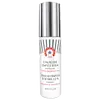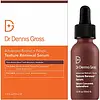What's inside
What's inside
 Key Ingredients
Key Ingredients

 Benefits
Benefits

 Concerns
Concerns

 Ingredients Side-by-side
Ingredients Side-by-side

Water
Skin ConditioningDimethicone
EmollientGlycerin
HumectantRetinyl Propionate
Skin ConditioningRetinol
Skin ConditioningPentapeptide-34 Trifluoroacetate
EmollientHydroxyacetophenone
AntioxidantCaprylic/Capric Triglyceride
MaskingCitric Acid
BufferingDimethicone Crosspolymer
Emulsion StabilisingDimethiconol
EmollientDisodium EDTA
Hydroxyethyl Acrylate/Sodium Acryloyldimethyl Taurate Copolymer
Emulsion StabilisingIsohexadecane
EmollientLaureth-4
EmulsifyingMica
Cosmetic ColorantPolysorbate 20
EmulsifyingPolysorbate 60
EmulsifyingPropanediol
SolventSodium Citrate
BufferingSorbitan Isostearate
EmulsifyingBHT
AntioxidantPhenoxyethanol
PreservativeSodium Benzoate
MaskingCI 77891
Cosmetic ColorantWater, Dimethicone, Glycerin, Retinyl Propionate, Retinol, Pentapeptide-34 Trifluoroacetate, Hydroxyacetophenone, Caprylic/Capric Triglyceride, Citric Acid, Dimethicone Crosspolymer, Dimethiconol, Disodium EDTA, Hydroxyethyl Acrylate/Sodium Acryloyldimethyl Taurate Copolymer, Isohexadecane, Laureth-4, Mica, Polysorbate 20, Polysorbate 60, Propanediol, Sodium Citrate, Sorbitan Isostearate, BHT, Phenoxyethanol, Sodium Benzoate, CI 77891
Water
Skin ConditioningPropylene Glycol
HumectantDimethyl Isosorbide
SolventPolyglyceryl-10 Laurate
Skin ConditioningGlycerin
HumectantEthoxydiglycol
HumectantLactic Acid
BufferingHydroxypropyl Starch Phosphate
Mandelic Acid
AntimicrobialRetinol
Skin ConditioningBakuchiol
AntimicrobialNephelium Lappaceum Leaf Extract
Skin ConditioningFerulic Acid
AntimicrobialSqualane
EmollientLinoleic Acid
CleansingSalicylic Acid
MaskingSalix Alba Bark Extract
AstringentPhospholipids
Skin ConditioningSoy Isoflavones
Skin ConditioningSodium Hyaluronate
HumectantSaccharide Isomerate
HumectantUbiquinone
AntioxidantSodium PCA
HumectantHexylresorcinol
AntimicrobialQuercetin
AntioxidantAdenosine
Skin ConditioningMorus Alba Bark Extract
Skin ConditioningPanthenol
Skin ConditioningGlycolic Acid
BufferingMaltodextrin
AbsorbentXanthan Gum
EmulsifyingLeuconostoc/Radish Root Ferment Filtrate
AntimicrobialCaprylic/Capric Triglyceride
MaskingPotassium Hydroxide
BufferingPolysorbate 20
EmulsifyingSodium Phytate
Citric Acid
BufferingSodium Citrate
BufferingPhenoxyethanol
PreservativeSodium Benzoate
MaskingPotassium Sorbate
PreservativeWater, Propylene Glycol, Dimethyl Isosorbide, Polyglyceryl-10 Laurate, Glycerin, Ethoxydiglycol, Lactic Acid, Hydroxypropyl Starch Phosphate, Mandelic Acid, Retinol, Bakuchiol, Nephelium Lappaceum Leaf Extract, Ferulic Acid, Squalane, Linoleic Acid, Salicylic Acid, Salix Alba Bark Extract, Phospholipids, Soy Isoflavones, Sodium Hyaluronate, Saccharide Isomerate, Ubiquinone, Sodium PCA, Hexylresorcinol, Quercetin, Adenosine, Morus Alba Bark Extract, Panthenol, Glycolic Acid, Maltodextrin, Xanthan Gum, Leuconostoc/Radish Root Ferment Filtrate, Caprylic/Capric Triglyceride, Potassium Hydroxide, Polysorbate 20, Sodium Phytate, Citric Acid, Sodium Citrate, Phenoxyethanol, Sodium Benzoate, Potassium Sorbate
 Reviews
Reviews

Ingredients Explained
These ingredients are found in both products.
Ingredients higher up in an ingredient list are typically present in a larger amount.
This ingredient is an emollient, solvent, and texture enhancer. It is considered a skin-softener by helping the skin prevent moisture loss.
It helps thicken a product's formula and makes it easier to spread by dissolving clumping compounds.
Caprylic Triglyceride is made by combining glycerin with coconut oil, forming a clear liquid.
While there is an assumption Caprylic Triglyceride can clog pores due to it being derived from coconut oil, there is no research supporting this.
Learn more about Caprylic/Capric TriglycerideCitric Acid is an alpha hydroxy acid (AHA) naturally found in citrus fruits like oranges, lemons, and limes.
Like other AHAs, citric acid can exfoliate skin by breaking down the bonds that hold dead skin cells together. This helps reveal smoother and brighter skin underneath.
However, this exfoliating effect only happens at high concentrations (20%) which can be hard to find in cosmetic products.
Due to this, citric acid is usually included in small amounts as a pH adjuster. This helps keep products slightly more acidic and compatible with skin's natural pH.
In skincare formulas, citric acid can:
While it can provide some skin benefits, research shows lactic acid and glycolic acid are generally more effective and less irritating exfoliants.
Most citric acid used in skincare today is made by fermenting sugars (usually from molasses). This synthetic version is identical to the natural citrus form but easier to stabilize and use in formulations.
Read more about some other popular AHA's here:
Learn more about Citric AcidGlycerin is already naturally found in your skin. It helps moisturize and protect your skin.
A study from 2016 found glycerin to be more effective as a humectant than AHAs and hyaluronic acid.
As a humectant, it helps the skin stay hydrated by pulling moisture to your skin. The low molecular weight of glycerin allows it to pull moisture into the deeper layers of your skin.
Hydrated skin improves your skin barrier; Your skin barrier helps protect against irritants and bacteria.
Glycerin has also been found to have antimicrobial and antiviral properties. Due to these properties, glycerin is often used in wound and burn treatments.
In cosmetics, glycerin is usually derived from plants such as soybean or palm. However, it can also be sourced from animals, such as tallow or animal fat.
This ingredient is organic, colorless, odorless, and non-toxic.
Glycerin is the name for this ingredient in American English. British English uses Glycerol/Glycerine.
Learn more about GlycerinPhenoxyethanol is a preservative that has germicide, antimicrobial, and aromatic properties. Studies show that phenoxyethanol can prevent microbial growth. By itself, it has a scent that is similar to that of a rose.
It's often used in formulations along with Caprylyl Glycol to preserve the shelf life of products.
Polysorbate 20 is made by combining ethoxylation of sorbitan, ethylene oxide, and lauric acid. It is a mild cleansing agent, surfactant, and emulsifier.
As a surfactant, it helps collect dirt and oils for washing. Emulsifiers prevent oils and water from separating.
Polysorbate 20 also adds scent to a product. Since it is made using sorbitol, it has a sweet scent. Sorbitol can also be found in fruits such as apples and peaches.
The lauric acid used to create Polysorbate 20 is often derived from coconuts.
Polysorbate 20 may not be fungal acne safe.
Learn more about Polysorbate 20Retinol is a gold-standard ingredient for anti-aging. It is a form of Vitamin A and belongs to the class of retinoids that also includes tretinoin.
Why is retinol famous?
It has the most scientific studies backing up its skin benefits out of all the non-prescription ingredients.
Retinol is proven to:
This is why retinol is effective at removing wrinkles, fading dark spots, treating acne, and reducing the appearance of pores.
Studies show retinol is less effective when exposed to UV. Be sure to look for appropriate packaging to keep your retinol potent (similar to Vitamin C).
Using retinol or any retinoids will increase sun-sensitivity in the first few months. Though studies show retinoids increase your skin's natural SPF with continuous use, it is best to always wear sunscreen and sun-protection.
We recommend speaking with a medical professional about using this ingredient during pregnancy.
Retinol may cause irritation in some people, so be sure to patch test. Experts recommend 'ramping up' retinol use: start using this ingredient once a week and work up to using it daily.
Read about Tretinoin
Learn more about RetinolSodium Benzoate is a preservative. It's used in both cosmetic and food products to inhibit the growth of mold and bacteria. It is typically produced synthetically.
Both the US FDA and EU Health Committee have approved the use of sodium benzoate. In the US, levels of 0.1% (of the total product) are allowed.
Sodium benzoate works as a preservative by inhibiting the growth of bacteria inside of cells. It prevents the cell from fermenting a type of sugar using an enzyme called phosphofructokinase.
It is the salt of benzoic acid. Foods containing sodium benzoate include soda, salad dressings, condiments, fruit juices, wines, and snack foods.
Studies for using ascorbic acid and sodium benzoate in cosmetics are lacking, especially in skincare routines with multiple steps.
We always recommend speaking with a professional, such as a dermatologist, if you have any concerns.
Learn more about Sodium BenzoateSodium Citrate is the sodium salts of citric acid. In skincare, it is used to alter pH levels and acts as a preservative.
Its main functions are to maintain the pH of a product and neutralize metal ions.
The acidity of our skin is maintained by our glands and skin biome; normal pH level of skin is slightly acidic (~4.75-5.5).
Being slightly acidic allows our skin to create an "acid mantle". This acid mantle is a thin barrier that protects our skin from bacteria and contaminants.
Learn more about Sodium CitrateWater. It's the most common cosmetic ingredient of all. You'll usually see it at the top of ingredient lists, meaning that it makes up the largest part of the product.
So why is it so popular? Water most often acts as a solvent - this means that it helps dissolve other ingredients into the formulation.
You'll also recognize water as that liquid we all need to stay alive. If you see this, drink a glass of water. Stay hydrated!
Learn more about Water